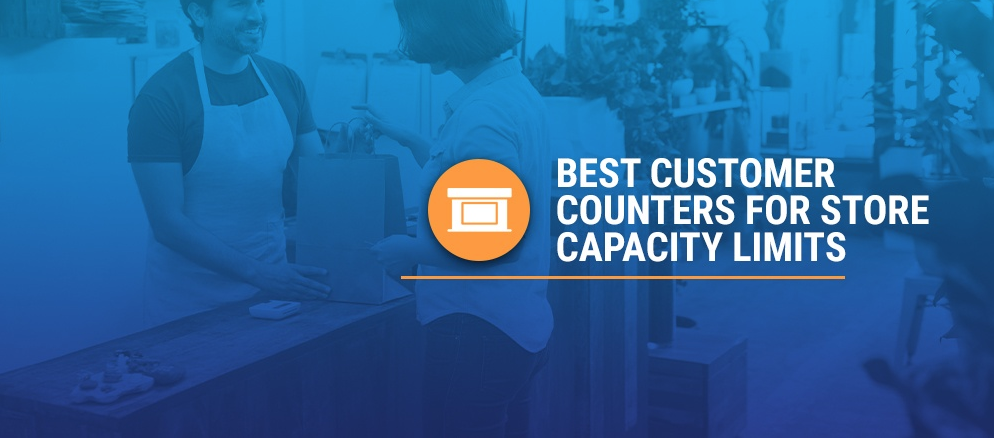

Capacity and occupancy counting is new territory for many retailers. Once, it made sense to use a people counting system that could give you a tally at the end of the day or even once per hour. In this way, people counting technology has been used for many years to predict staffing needs and calculate conversion rates.
The issue for retailers today is in finding the best store traffic counters to achieve real-time occupancy tracking. While the technology has been around for years, not all systems can handle continuous monitoring. So, we’ve compiled this guide to everything you need to know about using customer counters for capacity limits. Learn about the benefits of using this technology, check out features you should look for and compare the systems available.
Read the full article or skip to a specific section:
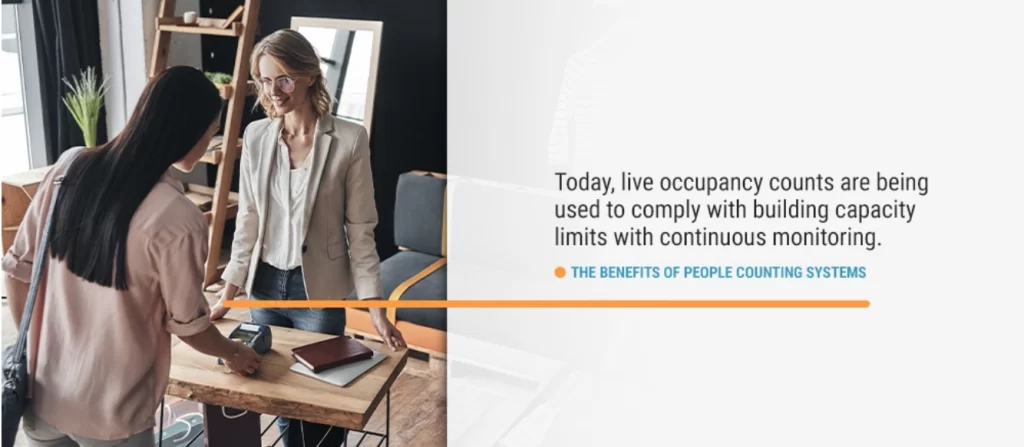
Today, live occupancy counts are being used to comply with building capacity limits with continuous monitoring. When enforcing fire codes or other safety measures, accurate counting allows you to meet occupancy limits without sacrificing customers. You can also improve shopper satisfaction and maximize sales opportunities. If you keep a line outside your store to stay under capacity, a live count can allow customers to see the current occupancy and decide if they want to wait in line.
As real-time occupancy tracking evolves, retailers will be able to optimize staffing even more. Knowing how many people are in your store and what time they entered allows you to predict how many registers to keep open. You can keep checkout wait times down and avoid short-staffed registers. That level of detail lets you maximize your cashiers’ efficiency, moving them to other duties when occupancy decreases.
The right technology allows you to track staff members separately from customers. This ability can also improve efficiency. For example, imagine the current occupancy count calls for five checkout lanes to be open in 15 minutes. The store manager can use people tracking to see if staff opened five lanes and intervene if needed. The possibilities for continuous occupancy tracking continue to grow as more retailers adopt the technology and begin harnessing its power.
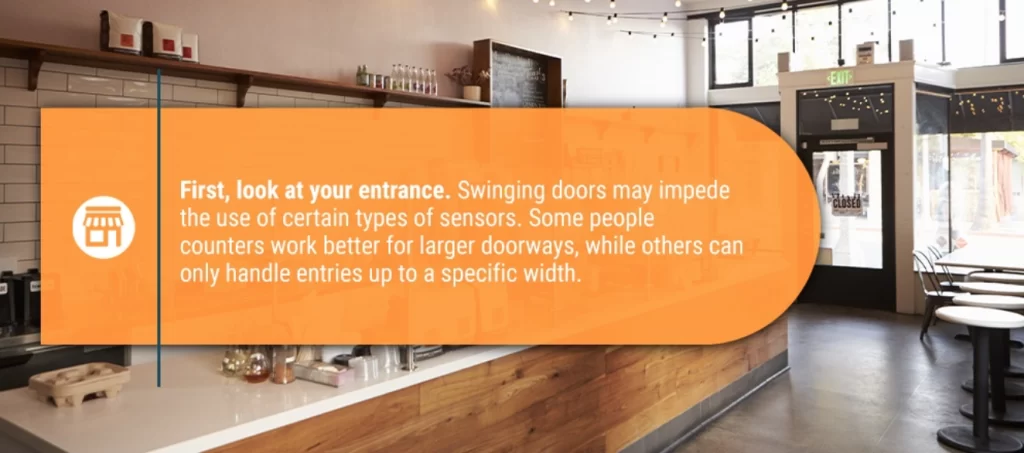
People counting technology harnesses sensors to provide a count of how many people enter a store, room or building. Among the many reasons to use a customer counter, limiting or enforcing store capacity is an increasing need. Before you can choose one for your store, you need to evaluate your setting to understand which models will work for you.
First, look at your entrance. Swinging doors may impede the use of certain types of sensors. Some people counters work better for larger doorways, while others can only handle entries up to a specific width. If you have displays and frequent browsing taking place near the entrance, you’ll need a system that can distinguish various objects and movements to avoid miscounts.
Further, you’ll likely need to consider your power requirements. Some models require nearby plug-in power sources, usually a 110-volt outlet. Others offer wireless capabilities with rechargeable or lithium batteries and Power of Ethernet (PoE) capabilities.
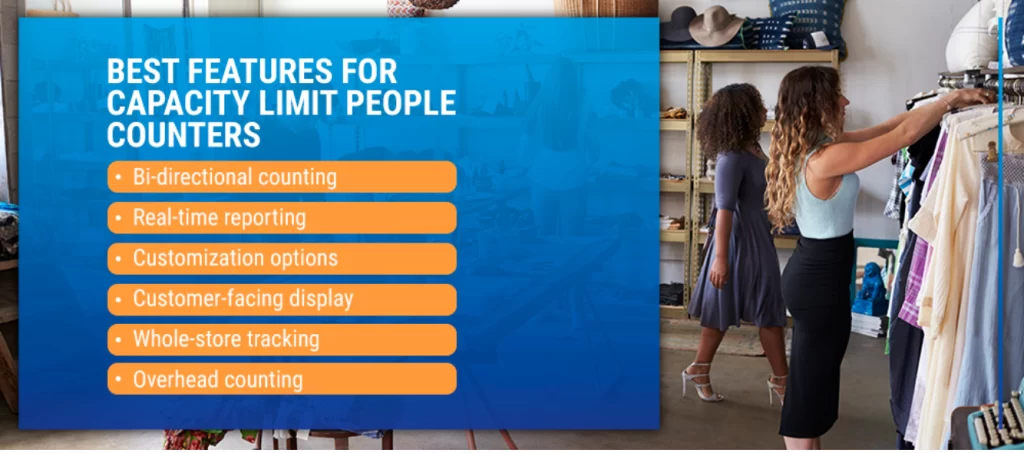
Most retail people counting systems measure conversion rates. They allow you to look at the total number of sales in the context of the number of people in the store. Depending on the system used, you may receive counts at the end of the day or by the hour. This system works well for marketing purposes, but it may not be ideal for occupancy counting.
If your store plans to use your customer counter to enforce capacity limits, be on the lookout for six key features:
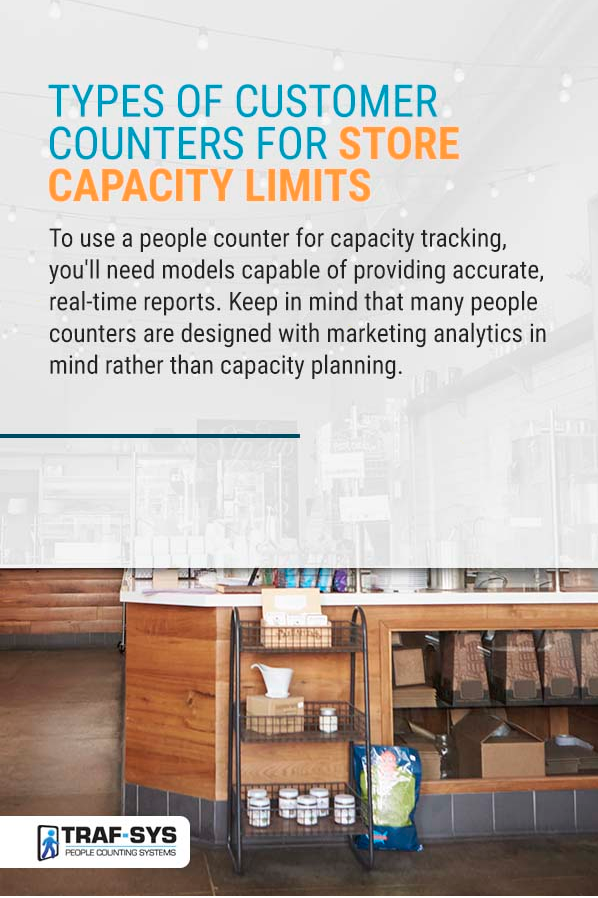
There are many different types of people counting systems on the market. Each one has unique features that make them ideal for specific environments. To use a people counter for capacity tracking, you’ll need models capable of providing accurate, real-time reports. Keep in mind that many people counters are designed with marketing analytics in mind rather than capacity planning. While any occupancy counter will also be able to provide data to measure conversion rates and the success of your marketing campaigns, not all people counters support live occupancy reporting. Here are two of the best customer counters available, and their level of suitability for live capacity monitoring:
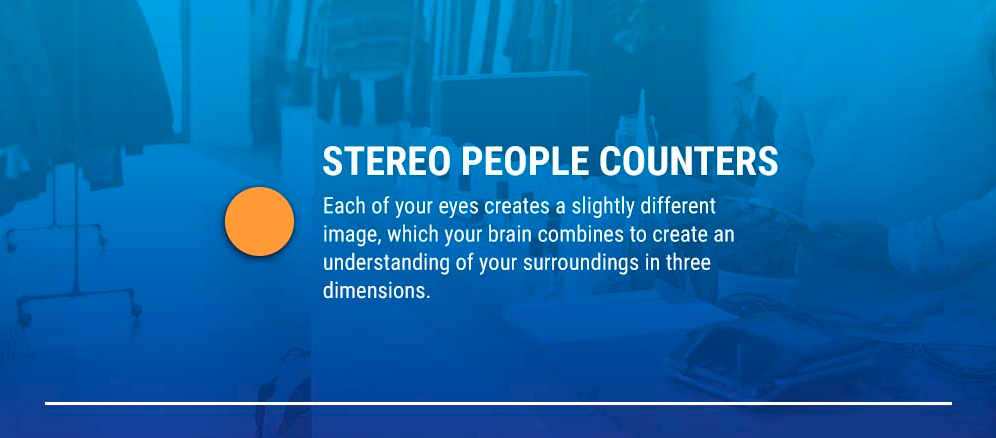
Stereo counters are about the size of a rectangular pencil case with two camera lenses. Like human eyesight, the dual cameras provide depth of field. The technology is modeled closely after how binocular vision works in nature. Each of your eyes creates a slightly different image, which your brain combines to create an understanding of your surroundings in three dimensions.
Most stereo sensors mimic the typical distance between human eyes, which averages around 60 millimeters. The software connected to the sensors does the same work as our brains, making sense of the two images collected by each of the camera lenses for 3D image processing. The result is a sensor that can count people as well as a person can. Unlike a person, the technology won’t get fatigued and is less likely to make mistakes.
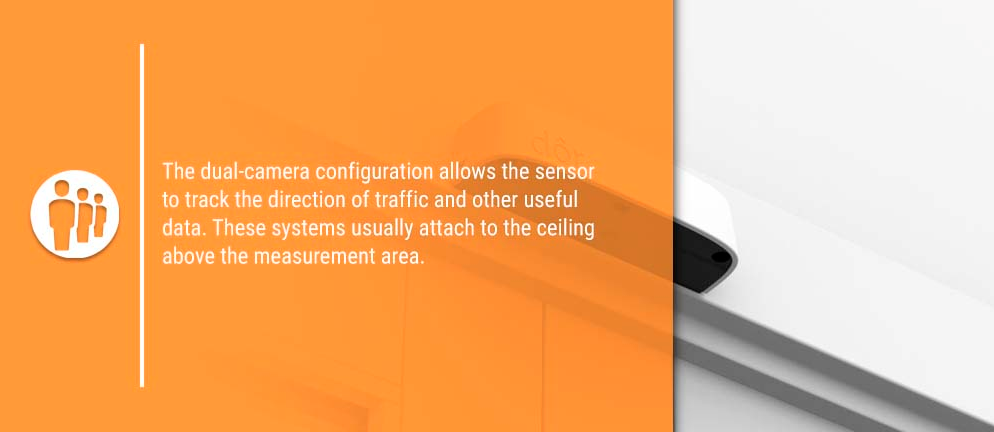
The dual-camera configuration allows the sensor to track the direction of traffic and other useful data. These systems usually attach to the ceiling above the measurement area. They can be slightly tilted to create a broader field of vision while maintaining accuracy. Stereo counters won’t lose sight of their targets even with gaps in traffic flow, making them suitable for high and low volumes. They can monitor entries and exits in real-time. Because of their depth of field, they can estimate heights, identify children and exclude shopping carts for greater accuracy.
Stereo sensors can also be linked in a network to cover every entrance. This feature makes them useful for shopping malls, large department stores or any building with multiple entrances and exits. Because they update via software in real time, an employee at one entrance can tell how many people have entered a store through any door. This capability significantly eases communication and visibility since you don’t have to aggregate information from several employees taking manual counts.
One potential downside of a stereo counting system is that it uses cameras to identify and track people. Because cameras use visible light, changes in lighting and dim conditions can affect accuracy. Shadows and a busy background can also occasionally influence results. Traf-Sys systems have advanced light sensors that help our stereo counters adjust to different lighting conditions, making them more accurate in various ambient lighting conditions.
Collecting images of your shoppers may present a privacy concern. If your store already uses and stores security footage, you can adapt your current privacy procedures to protect your customers. If privacy is a concern for you, we recommend our time of flight people counting systems, which eliminate this obstacle.
Traf-Sys offers a variety of binocular stereo image processing sensor models in our Spectrum collection. We have options for indoor heights up to 29.5 feet. We also have systems for outdoor applications with waterproof hardware. They are resilient to changes in lighting or temperature, making them some of the most advanced camera trackers. They also have options to filter out strollers and carts to maintain an accurate capacity count and avoid sacrificing potential revenue. Our systems also have extended coverage for broader entries.
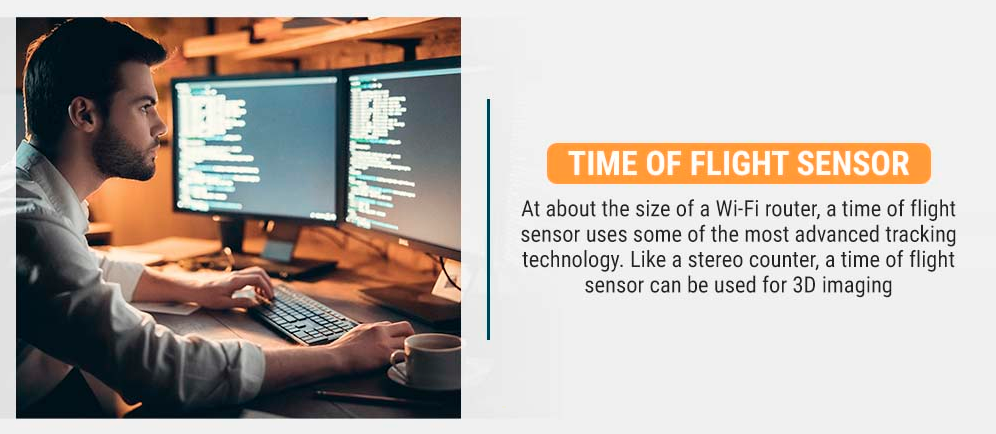
At about the size of a Wi-Fi router, a time of flight sensor uses some of the most advanced tracking technology. Like a stereo counter, a time of flight sensor can be used for 3D imaging. It sends a signal to the objects below it from its attachment point on the ceiling. Then, it records the reflection of infrared light as it bounces back to the sensor. It can build 3D images of customers by calculating the differences in speed between each beam of infrared light — hence the name, “time of flight.” With excellent depth of field, it can track movement and traffic better than stereo models. These sensors can work even in total darkness and link with other cameras to cover a wide entrance and enhance your data.
Time of flight people counters can track movement along x-, y- and z-axes. The result is even higher accuracy when it comes to tracking movement. They can calculate the heights of individuals within 2 centimeters, making them even more powerful at filtering out shopping carts and children. The images collected by time of flight sensors delineate the shape of a person with incredible accuracy, even outlining the contours of heads and shoulders. Like stereo sensors, they can be mounted on a tilt, increasing the measuring zone for wider entrances.
They are also lighting fast. One study found that time of flight sensors can measure at 150 frames per second, making real-time reporting possible. The same report also found that these sensitive instruments have a minimal average error rate of just 3.1%.
Because time of flight technology works on infrared rather than visible light, it also collects completely anonymous data. You will not need to adopt new practices to protect your customers. Further, it is unaffected by busy floor patterns or shadows.
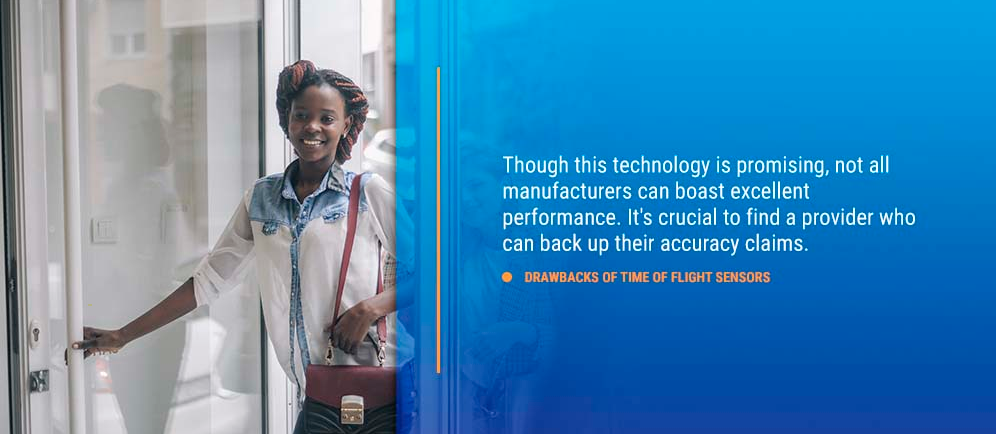
Though this technology is promising, not all manufacturers can boast excellent performance. It’s crucial to find a provider who can back up their accuracy claims. The Traf-Sys time of flight tracking system has a 99.5% accuracy rating, and we’ve backed this up with image processing validation.
One other disadvantage of time of flight sensors is they tend to be more expensive to implement than stereo counters. If budget is a concern for you, you may prefer stereo occupancy monitoring solutions.
The connected software provides a real-time occupancy count. Connected screens use color-coded warnings when the occupancy is approaching or exceeding capacity. You also have the option to include or exclude staff and keep the records for marketing analysis.
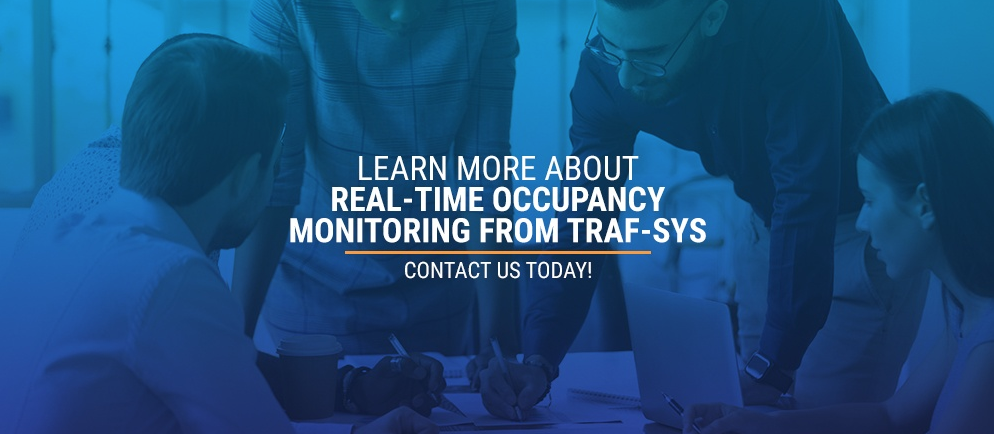
At Traf-Sys, we offer a wide selection of people counters for a variety of purposes. We’ve been at the forefront of continuous people counting through our time of flight capacity tracking solution. We also offer one of the best apps for people counting on iPads, smartphones and other mobile devices. Our SafeEntry application is optimized for occupancy tracking, while VisiCount provides advanced footfall analytics, which you can access right from your device.
We have the ideal occupancy counting technology for your retail environment and budget, and we’re happy to discuss options with you. Start comparing people counting systems and request your free quote today.